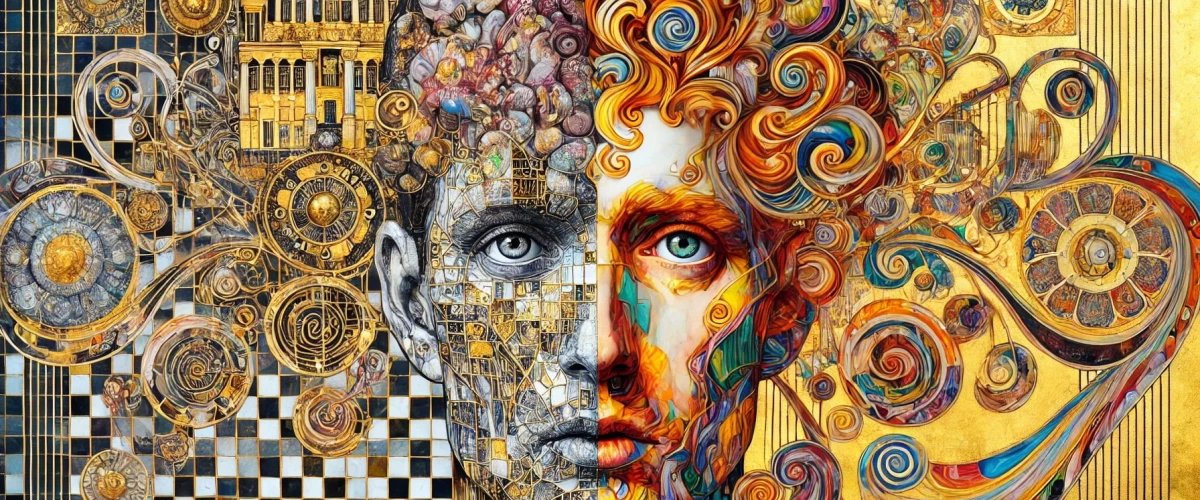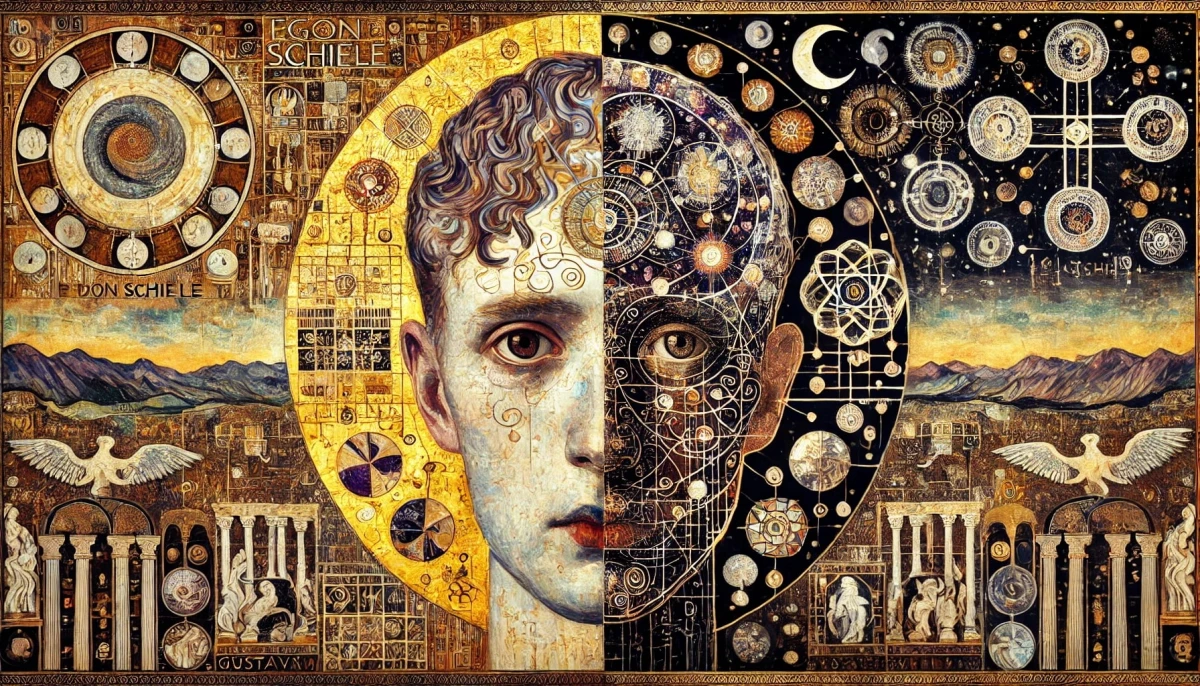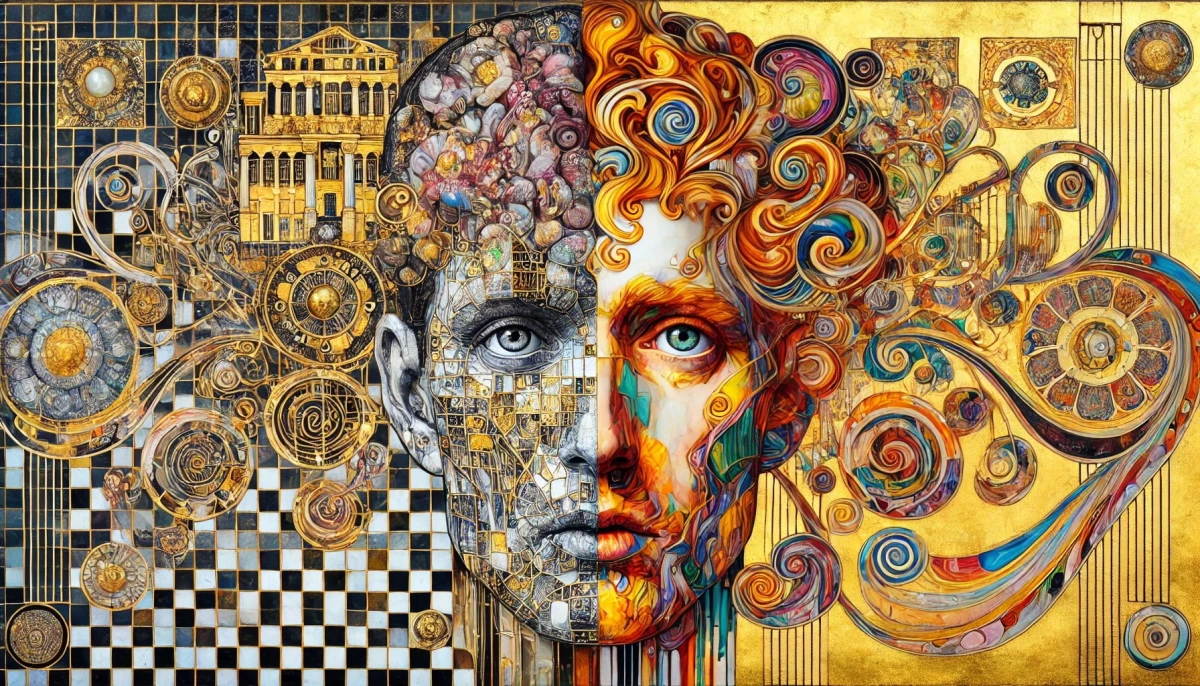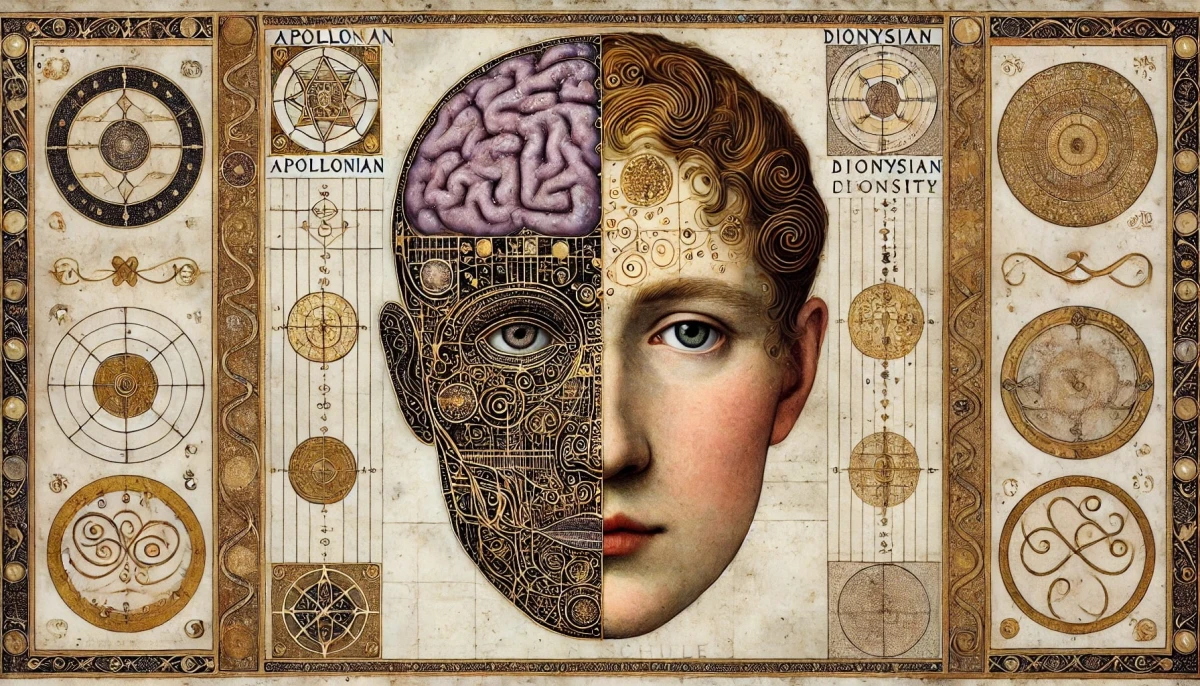
Dialogue between the two hemispheres
In his book The Master and His Emissary: The Divided Brain and the Making of the Western World (2009), Iain McGilchrist develops a thesis according to which the two hemispheres of the human brain have fundamentally different modes of perceiving and processing the world and that the cultural and intellectual history of the West has gradually preferred the reductive and mechanistic vision of the left hemisphere at the expense of the more holistic and intuitive perception of the right hemisphere.
In the first part of his book, he explains how the specialization of the hemispheres of our brain operates to support his reasoning. This is not unique to humans, but the exacerbation of these faculties is exercised in them more than in any other species.
Many popular books have oversimplified the brain, asserting that the left hemisphere is rational and the right hemisphere creative. Scientists have also fallen into the trap of making the left hemisphere the seat of speech, science, and knowledge, while the right hemisphere would be mute, somewhat foolish, and animalistic.
By re-examining the various experiments conducted on the brain and also revisiting observations of people who have suffered damage to one or the other hemisphere, McGilchrist reaches more nuanced conclusions.
First, the two hemispheres constantly collaborate. They communicate, exchange information, and respond to each other. However, it is remarkable that they do not have the same vision and understanding of the world.
- The right hemisphere perceives the world in its entirety, context, and complexity. It is involved in intuition, creativity, empathy, and the understanding of metaphors.
- The left hemisphere analyzes the world in a fragmented, linear, and abstract manner. It specializes in language, categorization, and symbolic manipulation but tends to reduce reality to simplified and manipulable patterns.
Nietzsche spoke of the worlds of Apollo (thought, knowledge) and Dionysus (life, experience).
The right hemisphere observes and remains attentive. It understands dangers and feeds on sensations, colours, beauty, and emotions. However, it struggles to put these realities into words. It then sends the information to the left brain, which possesses an impressive capacity for differentiation, allowing it to name and categorize. The left hemisphere then transmits the data back to the right hemisphere to recreate the world, smile, or cry at it. Through this incessant dialogue, consciousness operates, with more or less complexity depending on living species, and with great success in human intelligence.
The book’s first part, sometimes very technical, is filled with fascinating examples. For instance, why do most people hold a baby with its head on the left side? Because the baby’s left eye and the adult’s left eye, which are connected to the right hemisphere, are in a better position to observe each other. The right side of the brain specializes in facial expression, while the right eye, connected to the left hemisphere, will tend to regard the mouth… Speech is not yet present in the infant. It, therefore, perceives the world with its right brain. It absorbs like a sponge, and this privileged contact occurs in both directions.
But let’s not be mistaken. The two hemispheres are constantly in dialogue but seem, so to speak, blind to each other.
Another passage describes the birth of language, which, according to one hypothesis, originates from the primary emission of musical sounds. In other words, our ancestors communicated through melody. Evidence is that a baby begins by babbling, singing, and modulating its voice until the left brain, which awakens a little later in development, starts to separate sounds and assign them precise meanings.
Do whales not sing? And what about birds? But I am simplifying.
McGilchrist argues that the history of Western civilization can be interpreted as a struggle between these two modes of perception, with the progressive dominance of the left hemisphere:
- In Antiquity and the Middle Ages, there was a balance between the two modes, with a strong presence of symbolism, mythology, and holistic thought.
- From the Renaissance and especially with the Enlightenment, the rational and analytical thinking of the left hemisphere gradually took over.
- Modernity and postmodernity have amplified this trend, leading to a more mechanistic, individualistic vision of the world, disconnected from the global context.
It was during the Greek period that the division became spectacular. Plato is the ultimate symbol of this emerging separation. The philosopher adopted a normative and moralistic approach to the arts (belonging to the right side of the brain, at least for the amateur artist). For him, music and the arts should not be banned outright but strictly regulated to serve education, morality, and political stability in the city. This vision strongly influenced philosophical debates on art and its role in society. It marked the beginning of reason’s victory.
Of course, human history is more complex than it appears. And this phenomenon of differentiation does not apply as clearly in the Eastern world.
The author discusses the phenomenon of writing, a late invention. Initially, most writings were vertical, from right to left. According to observations, verticality belongs to the right hemisphere, while horizontality is the domain of the left hemisphere.
With the arrival of the alphabet replacing ideograms, writing transitioned to a horizontal mode. However, vowels were still absent from language tools. Very ancient Greek was written only with consonants, as is still the case in some modern languages, and was read from right to left, then reversed direction on the next line, forming a serpentine reading. Later, as language differentiation became more pronounced, vowels appeared. This led to the transfer of knowledge. The necessary separation between reality and conceptualization, so effective in understanding the world, became a double-edged sword.
Indeed, the result of this transformation is the growing supremacy of the left hemisphere, which, it seems, craves certainty and constantly wants to be right. However, this brain is quite blind because it does not understand the context in which it lives. It is capable of naming, period. Give it data, and it will generate an index, discover unsuspected patterns. However, it is the right hemisphere that feeds it!
The discovery of the benzene structure is attributed to chemist Friedrich August Kekulé, who allegedly had a key intuition while observing a fire or dreaming of a snake biting its tail (representing the cyclic structure of benzene). In 1865, Kekulé proposed that benzene was a cyclic molecule with six carbon atoms arranged in a ring, a breakthrough in organic chemistry.
Without this improbable, diversified, and unsettling contribution from the right brain, the left hemisphere is doomed to repetition and rigidity.
There are too many examples in this thick book (460 pages plus 150 pages of notes, all written in very small print!) for me to do justice to the author’s thought here.
McGilchrist argues that the supremacy of the left hemisphere has profound effects on our society:
- Loss of meaning and connection: By reducing reality to abstract models, we lose the ability to grasp the complexity and richness of the world.
- Hyper-rationalization: Science and technology have become ends in themselves, disconnected from human and spiritual values. Many thinkers across all fields tend to agree with him, even within quantum physics, where there is growing resistance against a dehumanizing and contradictory theory (don’t ask questions, just calculate!).
- Fragmentation and alienation: Excessive analytical thinking creates a world where everything is compartmentalized, leading to a loss of coherence and harmony.
McGilchrist does not advocate rejecting the left hemisphere but rather rebalancing it. He believes that wisdom lies in the right hemisphere’s ability to perceive the whole, with the left hemisphere serving as a tool for analysis and execution. In other words, the left hemisphere should be the “emissary” serving the “master,” the right hemisphere, not vice versa.
His thesis suggests that a more balanced society, reintegrating intuition, art, and connection to reality, would be more resilient and harmonious.
But is it too late? I remain optimistic. As the poet Ovid suggests, everything is a metamorphosis, everything changes, everything dies, and is reborn.
The emergence of artificial intelligence clearly shows the danger posed by the immense power of reason. Truth cannot afford to forget reality. Only our left eye can smile at the beauty of the world, even if it is the right eye that whispers the name of each color…


